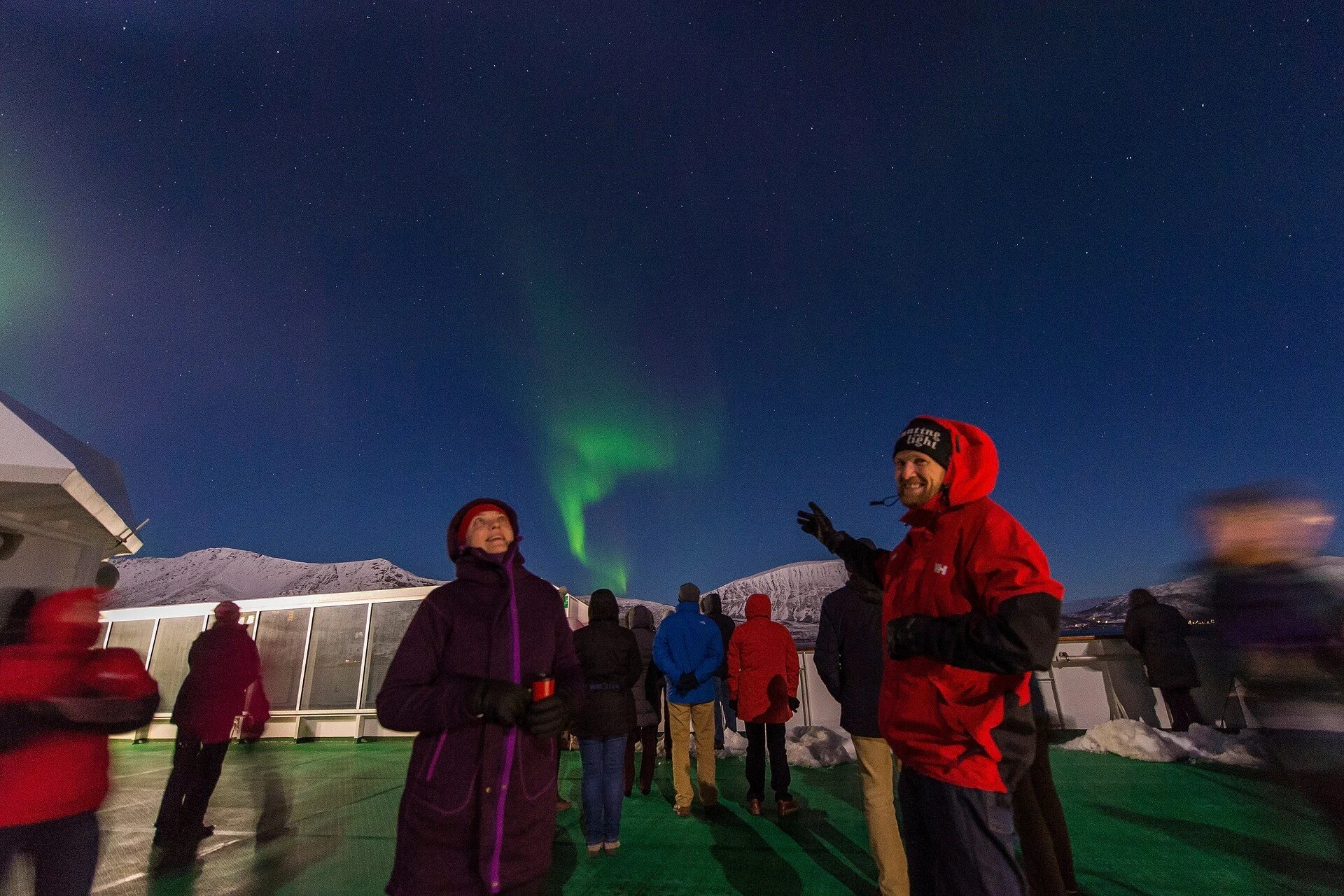
How to photograph the Northern Lights
Pro photographer Stian Klo and other keen astro-photographers share their tips for taking photos of the Northern Lights as you sail along Norway’s coast with us.
“I call the Northern Lights ‘the greatest magic show on earth,’” says Stian Klo, an award-winning photographer whose work has been published by National Geographic, Lonely Planet and the BBC, as well as Hurtigruten.
To capture the true beauty of the aurora when sailing our ships, you’ll need more than just a point-and-shoot approach. Here, Stian and other Northern Lights photography experts share their tips.
1. Composition is key
“Always think carefully about the composition of the photo,” Stian says. “Anyone can take a picture of the sky. But the photo becomes much more visually interesting if you include something else.”
Astronomer and astro-photographer Tom Kerss is clear about what that ‘something else’ is: “Norway has the most dramatic foreground I’ve ever seen…The mountains are amazing.”
Have a wide-angle lens in your camera kit to be able to take advantage of the natural composition that Norway’s landscape offers. It will allow you to frame as much of the scene-stealing celestial spectacle as possible together with the fjords and mountains below.

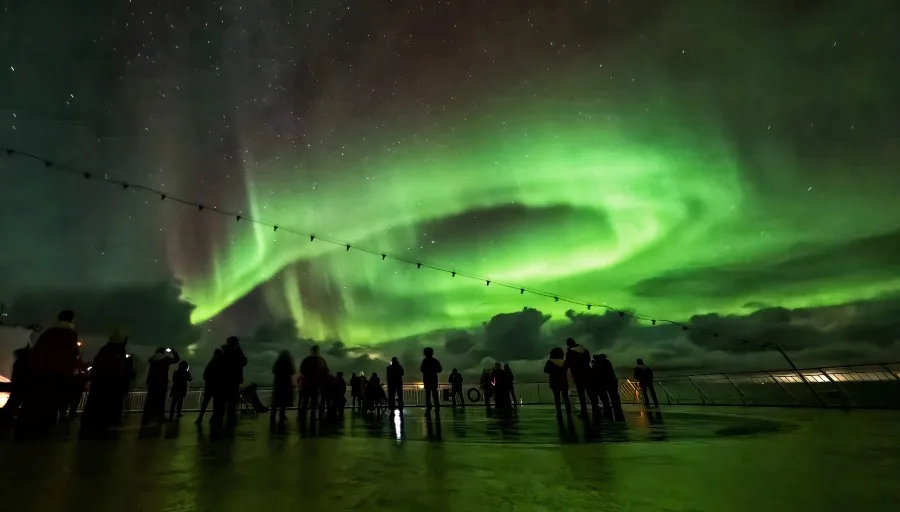
2. The darker the better
“Try to get away from big crowds and light sources,” suggests Stian. “I especially enjoy working on board Hurtigruten, far away from shore, where no streetlights compete with the spectacular lights in the sky.”
Tom warns “Make sure your camera's flash doesn't automatically activate, as this can ruin the view for everyone in an instant and spoil someone else’s shot.” The same goes for the glow from smartphone screens or the glare of a pocket torch.
“Practise good aurora-viewing etiquette,” advises Tom. “Use a red torch to find your way in the dark, as this colour doesn’t affect our natural night vision. And be careful not to shine lights in anyone's eyes. You'll be thankful that no one does it to you!”
3. Stabilize the shot
“If you were trying to look at Saturn through a telescope on a ship, any slight movement would take the planet out of the field of view,” explains Darren Baskill, a physics and astronomy lecturer and former organizer of the international Astronomy Photographer of the Year Competition.
The same principle applies to photographing the Northern Lights on the ship. Sway from the waves could result in the aurora looking out of focus or blurry.
Tom therefore recommends bringing a compact tripod: “When shooting from a moving ship, your exposure times will be limited, but a tripod will still be useful for minimizing vibrations.”
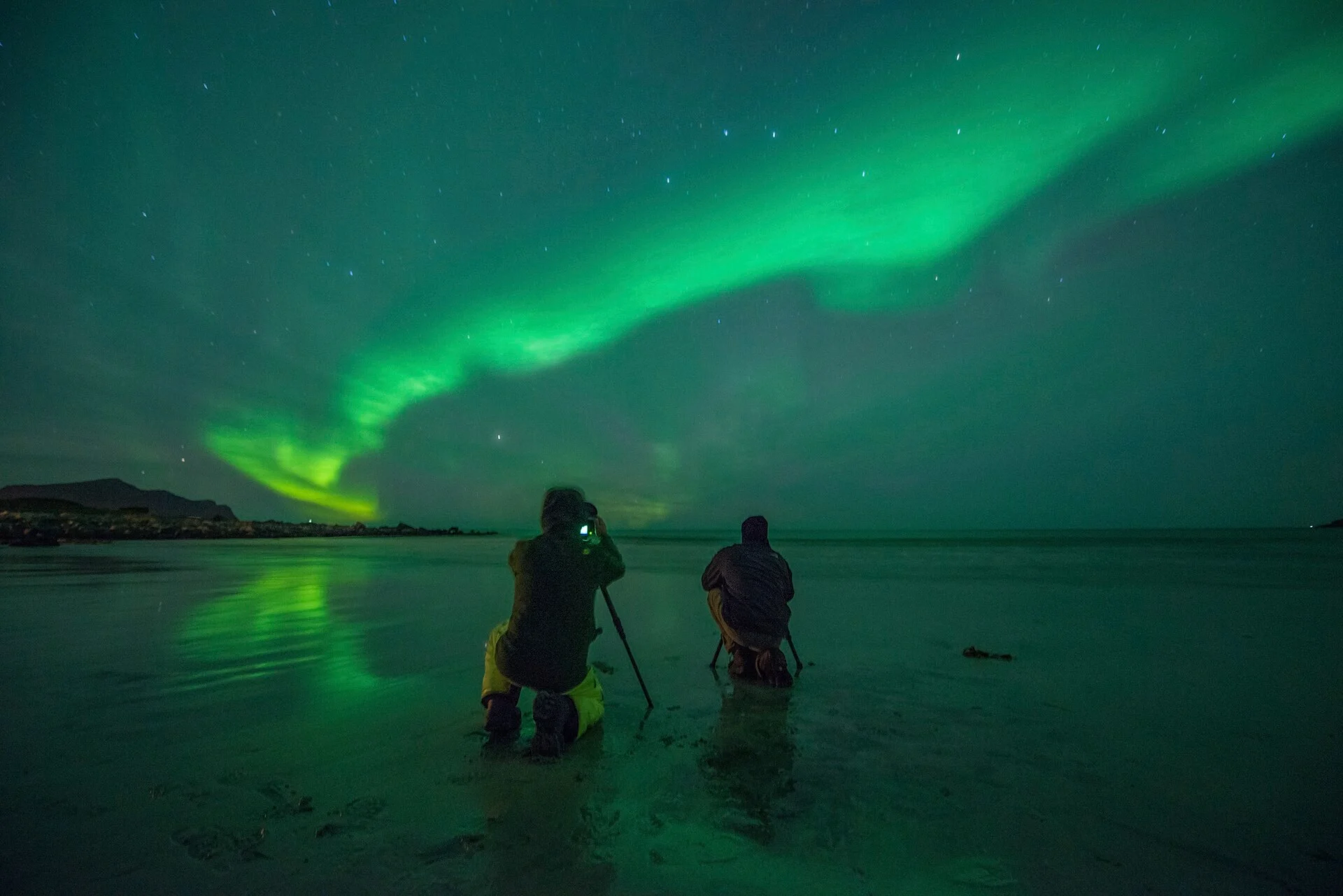
4. Know your settings
It’s well worth taking the time to learn which camera settings will give you the best photos before your trip.
“Photographing auroras is very rewarding, but if you're fumbling with your camera it can be equally frustrating,” says Tom. “Take some time to get familiar with your camera's settings, and how to operate it in the dark, so you won't be trying to figure all that out while the Lights are dancing overhead.”
Here are a few technical tips to familiarise yourself with before you go chasing the aurora.
Adjust your focus by using a star in the night sky as a marker.
For bright and active aurora, try a shutter speed of 5-10 seconds; for slow-moving aurora, 12-20 seconds; for faint aurora, take the shutter speed to 20-25 seconds.
Experiment with ISO. The higher the ISO, the more light you capture, but the photos also get grainier with a higher ISO.
Set your aperture (f-stop) to at least f4 to let in enough light to capture the aurora. Go no lower than f2.8 to avoid ‘noisy’ images.
Select your white balance as “daylight” so that the light in your photos isn’t too yellow or blue.
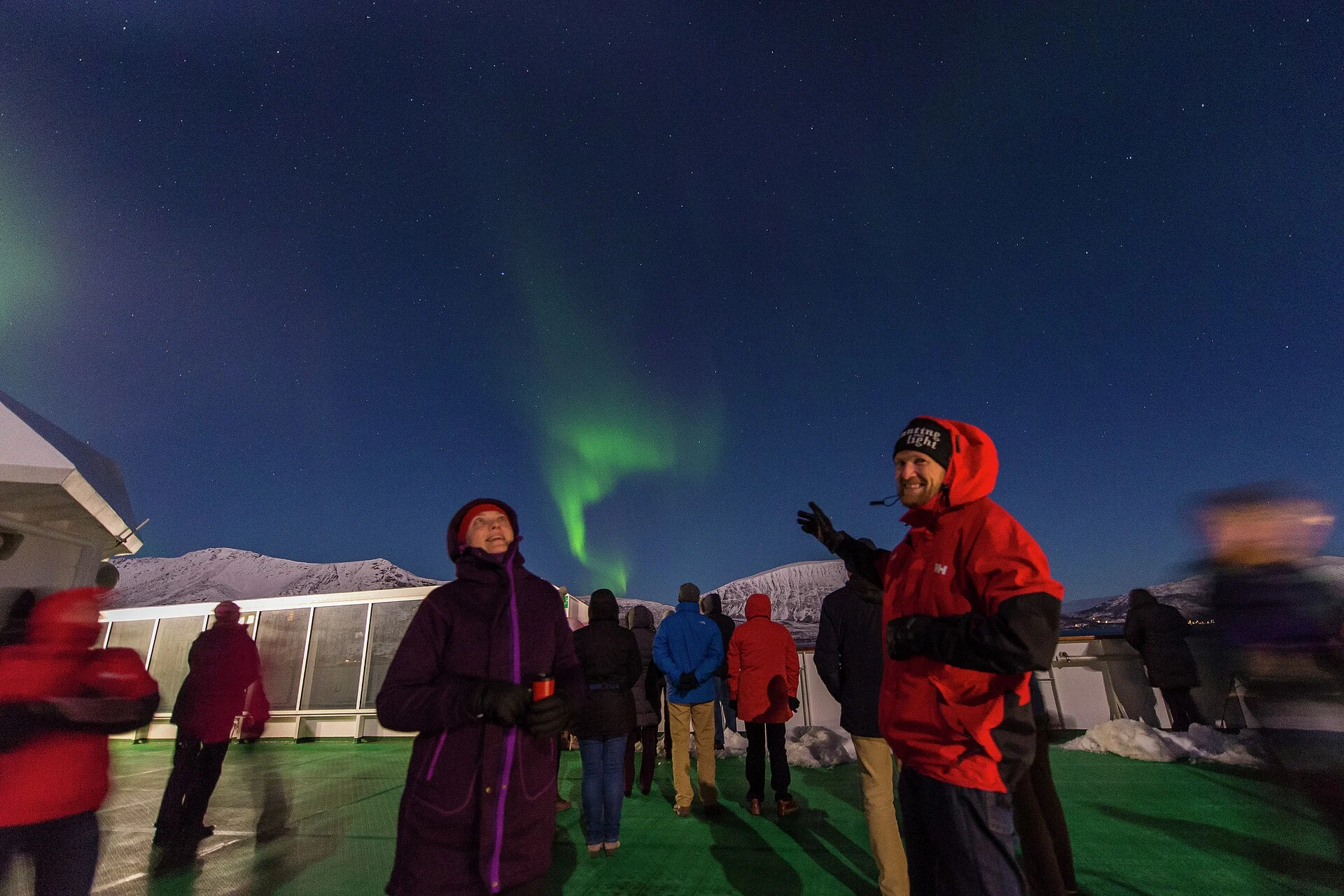
5. Preparation meets opportunity
Along the Norwegian coast, the aurora can appear above anywhere, any time. Make sure you are prepared for lights, camera, and action. A flask with a warm drink, handwarmers, and a red torch can also make the experience more comfortable.
“Keep all your outdoor gear together and ready to throw on at a moment's notice,” says Tom. Some aurora chasers even sleep in their clothes and coat, and jump into their boots to be on the ship’s deck in a matter of minutes.
Batteries drain faster in cold weather so don’t forget to have your camera charged, along with a spare set of batteries. Your memory card should have a large storage capacity, or bring several memory cards to fill up with your RAWs of the aurora.
6. As a last resort
If you don’t have a ‘proper’ camera, or your camera runs out of batteries, or the Northern Lights just take you completely by surprise one night, it’s good to know you can fall back on your smartphone.
“Many of today's flagship smartphones can take remarkably good photos of the Northern Lights, so you may already have what you need in your pocket,” says Tom.
Stian adds “Just make sure you use a tripod or clamp. Some smartphone cameras have manual settings. If yours does, set the shutter speed from 2 to 30 seconds.”
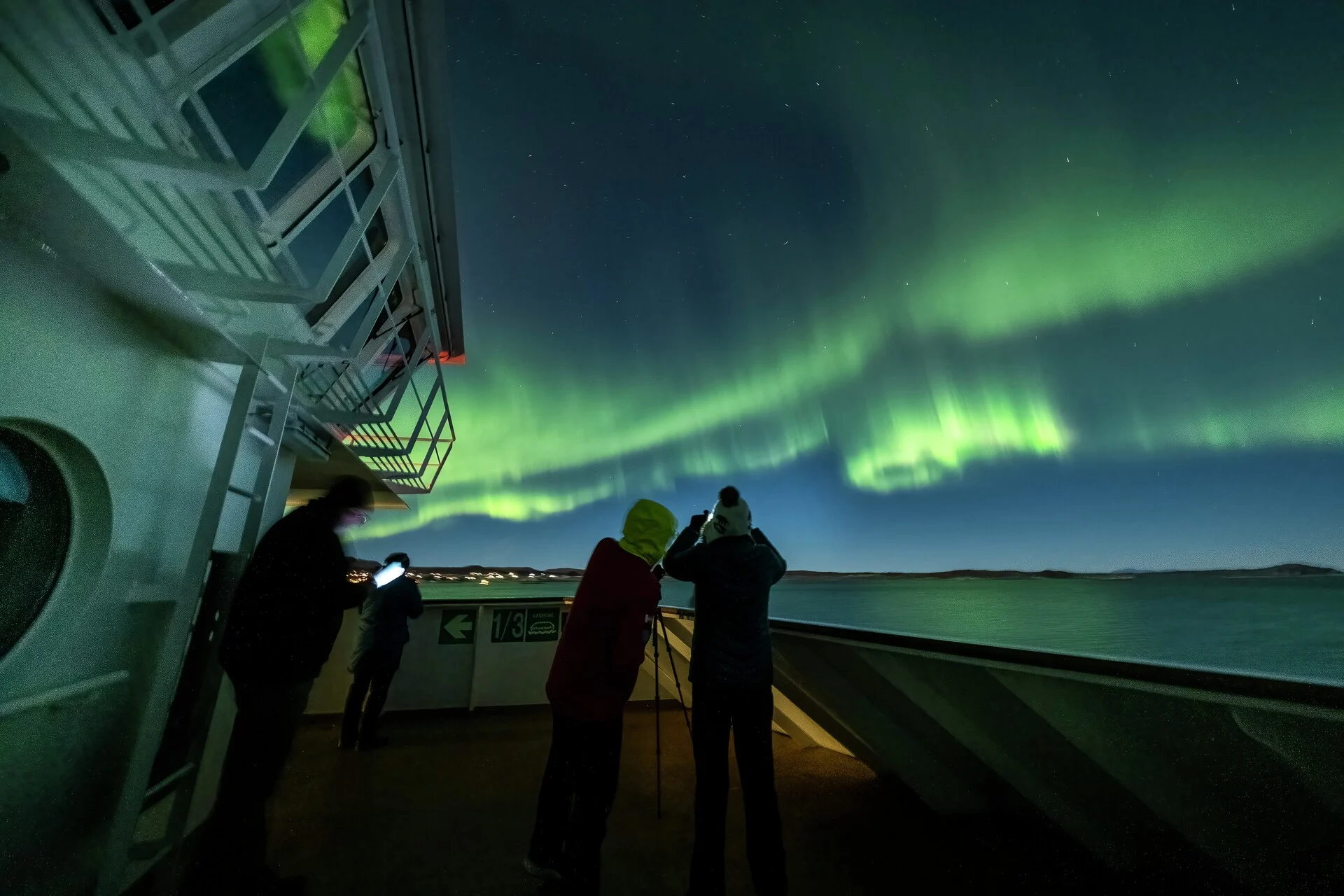

7. And finally…
Our last tip is maybe the most important: remember to step away from the lens for a few minutes and take in the spectacle with your own eyes. There’s really no substitute for seeing the Northern Lights in all their glory without a filter.
Lykke til (good luck)!
Our Northern Lights cruises
- Multiple offers
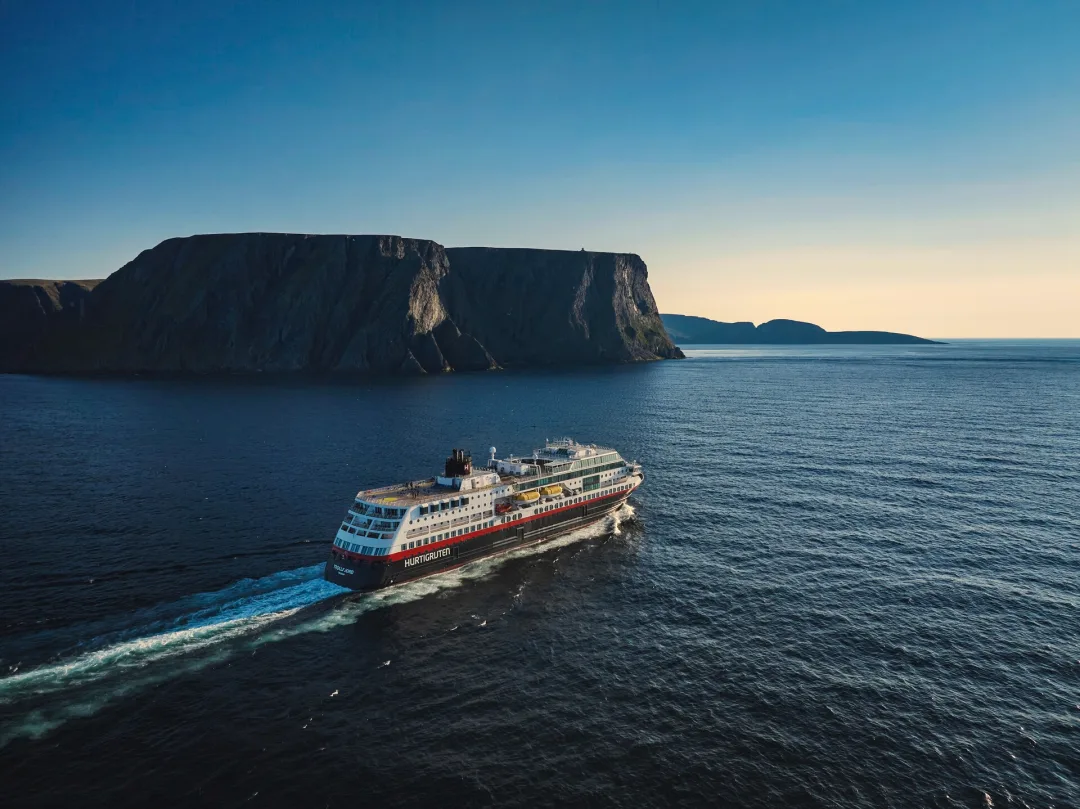
The North Cape Express: Full Voyage | Bergen to Oslo
Route
Bergen – Honningsvåg – Oslo (Roundtrip)
Departure Dates
December - April - 14 days
Price from $3,283
$2,976
Ship
MSTrollfjord
- Multiple offers
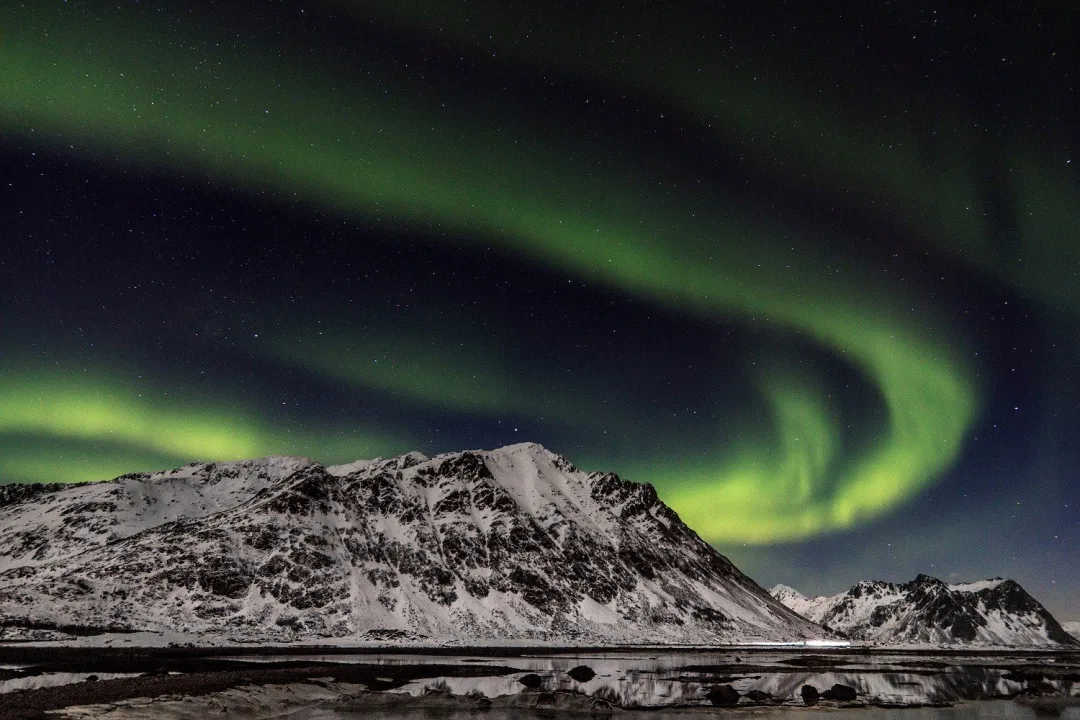
The North Cape Express: Full Voyage | Oslo to Bergen
Route
Oslo – Honningsvåg – Bergen (Roundtrip)
Departure Dates
December - May - 14 days
Price from $3,389
$3,071
Ship
MSTrollfjord
- Up to 10% off
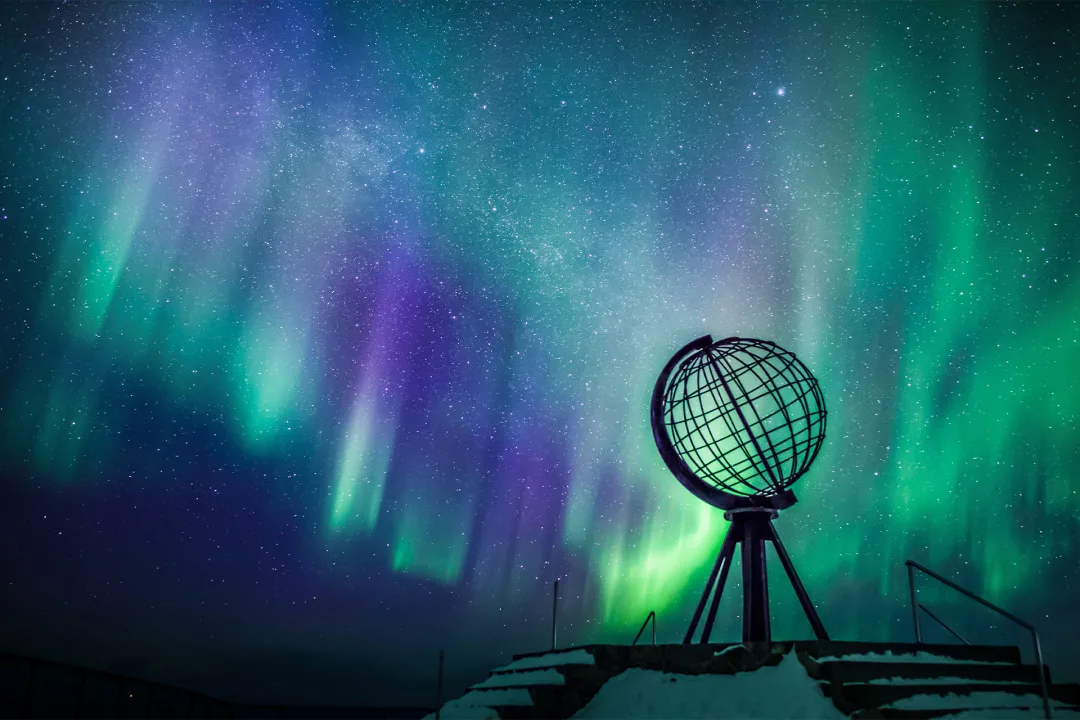
The North Cape Express: Full Voyage | Oslo Roundtrip | 2025-2026
Route
Oslo - North Cape - Oslo (Roundtrip)
Departure Dates
September - April - 15 days
Price from $3,707
$3,336
Ship
MSTrollfjord